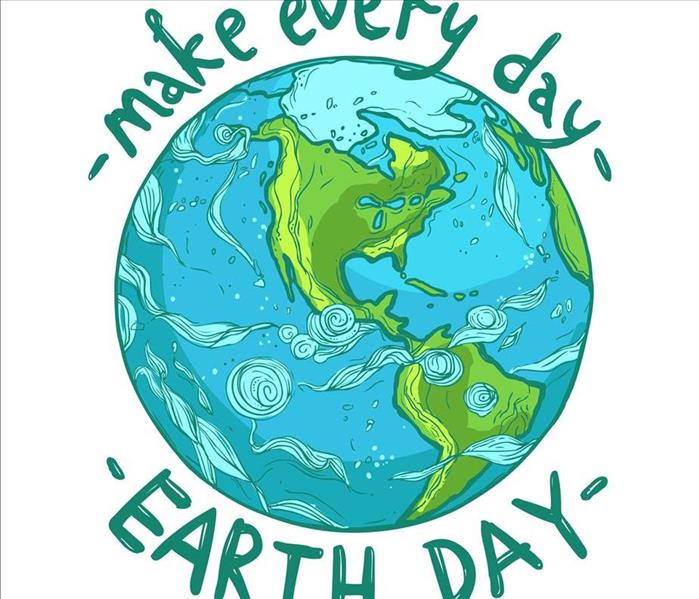Earth Day 2018
4/20/2018 (Permalink)
Ever wondered how Earth Day started? This observance arose from an interest in gathering national support for environmental issues.
In 1970, San Francisco activist John McConnell and Wisconsin Senator Gaylord Nelson separately asked Americans to join in a grassroots demonstration. McConnell chose the spring equinox (March 21, 1970) and Nelson chose April 22.
Common Earth Day activities include planting trees, cleaning up litter, or simply enjoying nature through hiking, gardening, or taking a stroll in a local park. Here are some fun facts about the wonderful planet we live on.
- Earth is the third planet from the sun, orbiting at a distance of 93 million miles (150 million km).
- It is the fifth biggest planet in the solar system with a diameter of 8,000 miles (13,000 km).
- Earth is around 4.5 billion years old.
- The Earth spins on its own axis every 23 hours 56 minutes and takes 365 days 6 hours to orbit the sun.
- The inner core of the Earth creates a magnetic field around the planet which protects it from solar winds, the liquid metal core is believed to be hotter than the surface of the sun.
- Life first appeared on the planet 3.5 billion years ago in the form of single celled organisms.
- Modern humans have only existed on the planet for around 200,000 years
- The Earth is less well mapped than the Moon, Venus or Mars because the majority of its surface is covered by water.
- The first picture of Earth taken from space occurred in October 1946.
- There are more than 3,000 spacecraft currently orbiting the Earth. Earth's Surface Earth's Atmosphere Earth's Temperature
- The average temperature on Earth is 13C (55F) to 17C (63F). The coldest temperatures can be found at the poles, around -34C (-30F), the hottest at the equator, around 32C (90F).
- Nitrogen makes up 78 percent of the atmosphere, while oxygen makes up 21 percent. The remaining 1 percent consists of argon and small amounts of other gases.
- 70% of Earth's surface is covered by water. The rest is made up of land covered by forests, deserts, mountain ranges, grassy plains and two polar ice caps. There are also a small amount of active volcanoes.




 24/7 Emergency Service
24/7 Emergency Service
